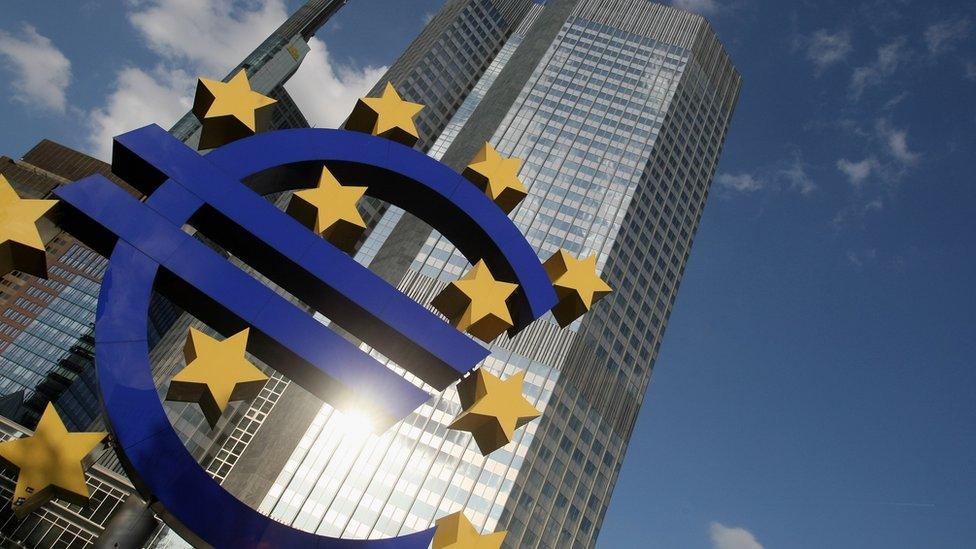ECB extends bond-buying scheme but at slower pace
- Published
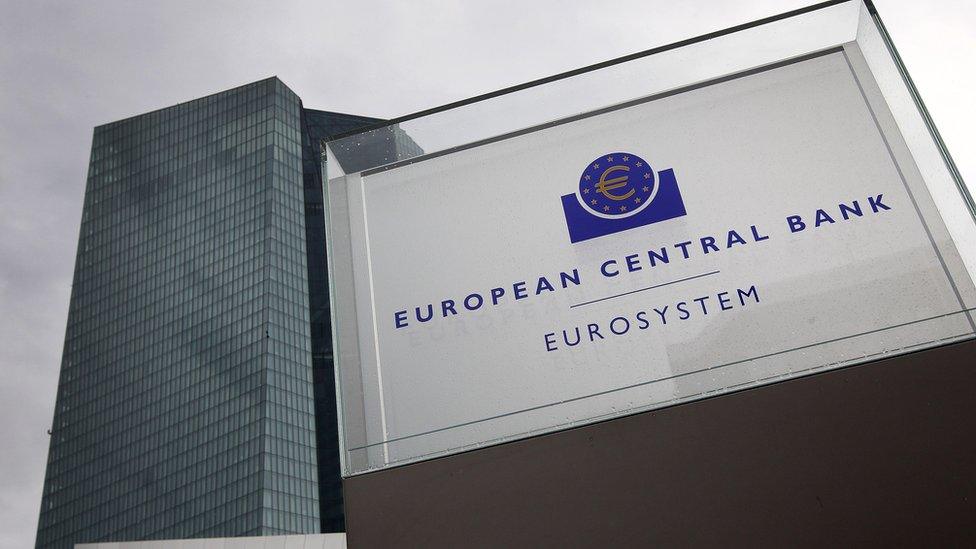
The European Central Bank has said it will extend its bond-buying programme until at least December 2017, but cut its purchases by €20bn a month.
The €80bn-a-month quantitative easing scheme had been due to end in March, although the bank had been expected to extend it for at least six months.
In a move that surprised markets, the ECB said it would only buy bonds worth €60bn a month from April.
The bank also kept its key interest rate unchanged at zero as expected.
Yields on most eurozone government bond yields rose slightly after the changes were announced, before returning to levels hit just before the statement.
Germany's 10-year bond yield - the benchmark for the eurozone - was at 0.43% after falling as low as 0.37%. The return has risen since the summer after falling into negative territory for the first time in June.
After rising initially, the euro fell sharply against all major currencies including the US dollar.
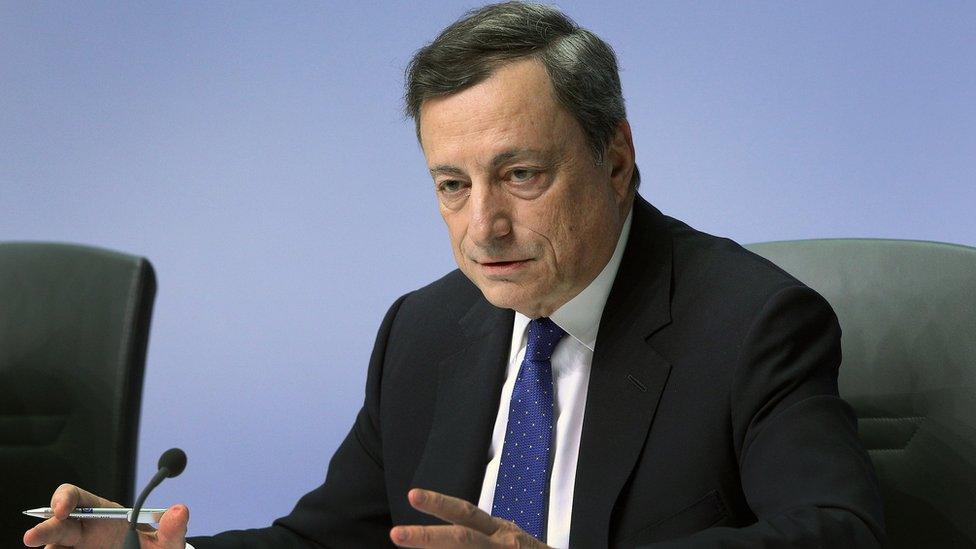
Mr Draghi said "uncertainty prevails" despite the risk of deflation receding
The ECB said that if the economic outlook "becomes less favourable", it would expand the size or length of its bond-buying programme.
Mario Draghi, the bank's president, told a press conference in Frankfurt that "tapering has not been discussed".
Chris Williamson, chief business economist at IHS Markit, described the QE move as a reasonable compromise.
"The stimulus will provide a further boost the region's recovery in the face of elevated levels of political uncertainty, but also recognises the encouraging recent economic data flow and the growing constraint on the amount of assets eligible for purchase."
'Alice in Wonderland'
Neil Williams, chief economist at Hermes Investment Management, said the changes meant that the ECB's "liquidity sink is still filling up".
"By tapering its monthly asset purchases from €80bn down to €60bn, [Draghi] is still looking to inject an extra €540bn in QE. To put this into perspective, this easily surpasses in equivalent terms, the combined GDPs of Greece and Portugal for example."
However, Kathleen Brooks of City Index described the ECB meeting as a "financial version of Alice in Wonderland" given some of the changes the bank was forced to make to its bond-buying scheme.
"It will now include bond purchases below its own deposit rate, which is already minus 0.4%. Thus, the ECB will be paying to hold some bonds that will be included in its QE programme. The craziness doesn't stop there; some of those bonds have a negative yield because of the ECB's QE programme in the first place," she said.
"The ECB has had to buy negative-yielding bonds because it has bought all the eligible higher yielding stuff, so it has no choice."
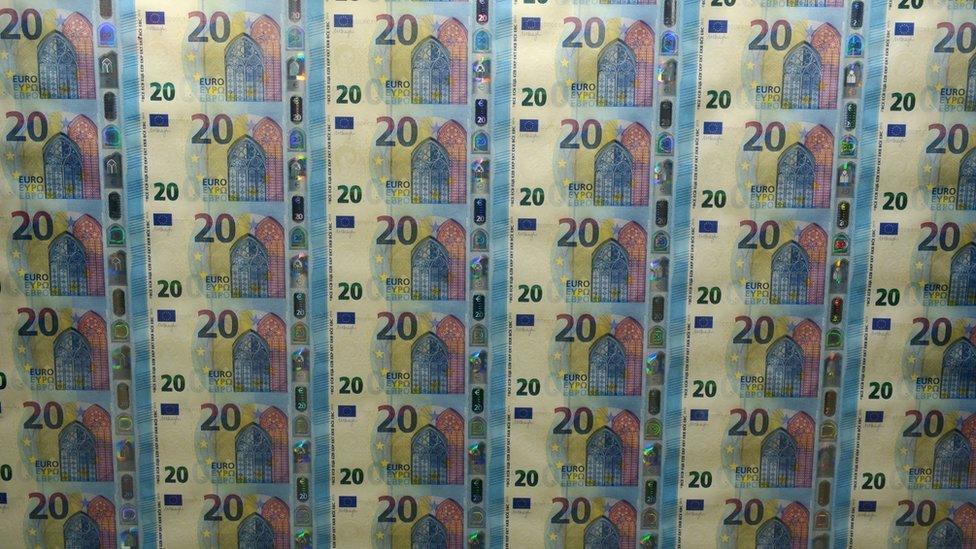
Although the risk of deflation in the eurozone had largely disappeared, Mr Draghi said that "uncertainty prevails".
The bank raised its forecasts slightly for next year and now expects inflation of 1.3% - still some distance below its 2% target - and growth of 1.7%.
Inflation is expected to be 1.6% in 2018 and 1.7% the following year, with growth steady at 1.6% for both years.
The bank also left at zero its refinancing rate, at which it lends money to commercial banks, and -0.4% on deposits it takes from banks. That negative rate aims to encourage banks to lend money rather than hoard it at the ECB.
The decision to extend the QE scheme helped shares in Italian banks continue to rise, with the sector on track for its best week since at least 2009.
- Published8 December 2016
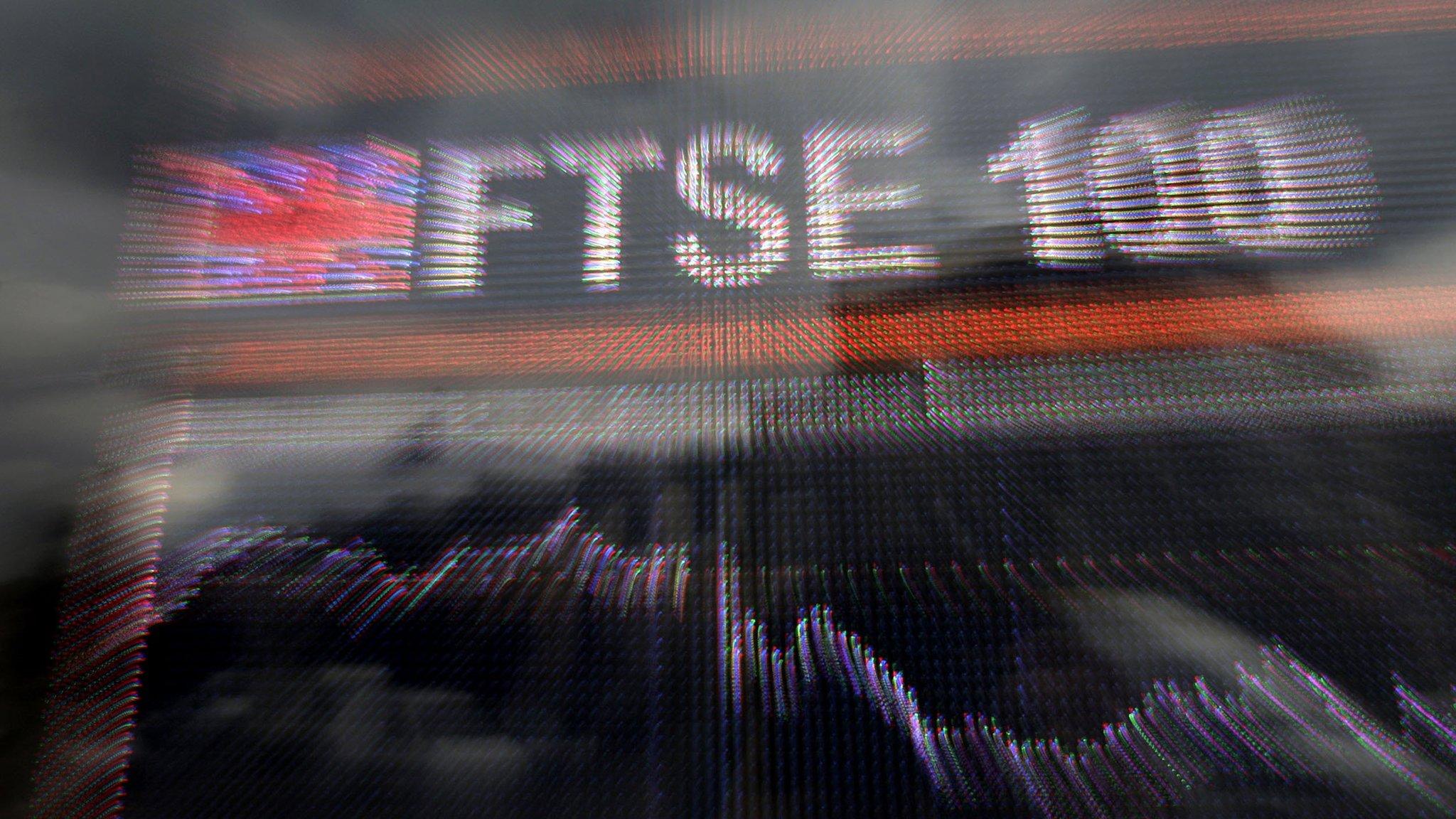
- Published24 November 2016
